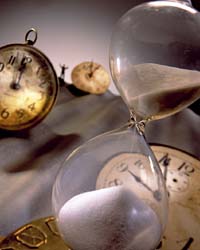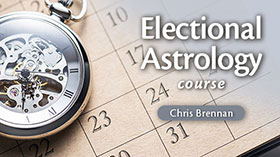Firdaria: A Medieval Time Lord System
 I came across an interesting website today called firdaria.com which provides free calculations for the medieval-era time-lord system known as Firdaria (Firdariyyah). This system, like all time-lord systems, breaks up a person’s life into specific sections or chapters that are each ruled by one of the seven traditional planets. The nature of the planet and its condition in a person’s natal chart determines how well the period will go for the native when that planet becomes activated at various points in their life.
I came across an interesting website today called firdaria.com which provides free calculations for the medieval-era time-lord system known as Firdaria (Firdariyyah). This system, like all time-lord systems, breaks up a person’s life into specific sections or chapters that are each ruled by one of the seven traditional planets. The nature of the planet and its condition in a person’s natal chart determines how well the period will go for the native when that planet becomes activated at various points in their life.
The 9th century Muslim astrologer Abu Ma’shar, who appears to be the principal source for Firdaria, outlines this time-lord system in his book known as On Solar Revolutions:
Each of the seven stars, and the Ascending and Descending Nodes, has certain determinate times, and each star administers to the native in accordance with its proper firdar. The firdar of the Sun, then, is 10 years; of Aphrodite, 8; of Hermes, 13; of the Moon, 9; of Kronos, 11; of Zeus, 12; of Ares, 7; of the Ascending Node, 3; of the Descending Node, 2 – altogether, they are 75. In the case of a diurnal nativity, then, the Sun takes the governorship of the first firdar, whether it should be present, then Aphrodite, then Hermes, then the Moon, then Kronos, in accordance with the order of their zones. In the case of nocturnal nativities, the Moon takes the first firdar, then Kronos, then Zeus, then Ares, in accordance with the prior order. (Abu Ma’shar, On Solar Revolutions, part 2, trans. Robert Schmidt, The Phaser Foundation, Cumberland, MD, 1999, pg. 42.)
So in this system you are starting with either the Sun or the Moon depending on if it is a day or night chart, and then you are assigning each of the planets a certain number of years. This is where Firdaria.com comes in handy because they will calculate the Firdar periods of each planet for you.
In the ancient traditions of astrology these time-lord systems were usually employed first in any delineation because they give the astrologer information about broad spans of time, and they let you know which planets will be activated during certain periods in the native’s life, for better or worse. Transits are then used as the very last line in predictive work in order to act as triggers, or as more precise timing indicators. This is somewhat different than the modern approach to prediction which usually employs transits as the initial and primary means of forecasting.
The Firdaria are basically the medieval western equivalent of the Indian “dasha” systems, or the Hellenistic “time-lord” systems. Although there are some similar time-lord techniques in the Hellenistic tradition, at this point there isn’t any evidence that the Firdaria system originated in the Hellenistic period. Most people seem to think that the system was developed by Persian astrologers at some point during the Medieval period. A Persian or Indian origin seems plausible to me since the nodes are assigned years in the timing scheme of this system, and for the majority of the Hellenistic tradition the nodes appear to have been somewhat neglected or downplayed. It was in the Indian tradition and then later the Persian tradition that the nodes were given great emphasis as particularly important bodies or points in the chart.
Firdaria.com will calculate your Firdar periods for you and even provide some general interpretations of certain periods. It looks like they just launched the site earlier this year and they plan to expand it in the future in order to include some additional techniques and systems, so we will have to keep an eye on them.
For more background information on the Firdaria you can check out this great paper by Steven Birchfield, as well as this other article by Rob Hand.
Article tags:



















I seem to get “better” results using the AlBiruni/Schoener method of calculating the time lords; although the results for day births are identical in both the Nodal Variation and the AlBiruni/Schoener method, it’s quite different when one comes to night births. Great tools these time lords: used with profections and transits they reveal a lot!
What is the variation with the AlBiruni/Schoener method exactly? I mainly work with annual profections and some of the other Hellenistic time lord systems such as zodiacal releasing, so I’m not terribly familiar with Firdaria at this point.
Like I said, in day births AlBiruni/Schoener (the method explained by Hand in the article you refer to in this topic) and Nodal Variation (the website that calculates Firdar periods) are the same;
For night births, the difference is in the Nodes: in the Nodal Variation the Nodes follow the Mars period; whereas in the AlBiruni/Schoener they come at the end of the cycle: Moon / Saturn / Jupiter / Mars / Sun / Venus / Mercury / Nodes
james
Oh, right, of course. I thought that you were referring to some sort of variation in the method of application for some reason. My mistake.
you wrote: “I mainly work with annual profections and some of the other Hellenistic time lord systems such as zodiacal releasing”
Zodiacal releasing? Now that seems quite interesting. Any chance you could let us know a bit about that? In the meantime I’ll have a look around the Net.
Thank you again for your nice work around here 🙂
james
I stumbled upon a freeware program called Zodiacal Releasing (version 1.48) that seems to calculate this time lord system.
From the help file we can read: “Releasing is a term that applies to time lord methods in general, where a significant point is set free from its position in the chart and allowed to move through the natal chart in one fashion or another. In procedures such as primary directions, the released significator moves through successive degrees of the chart in a smooth continuous arc, whereas in Zodiacal Releasing the significator moves sign by sign in discrete jumps”
also: “Zodiacal releasing uses lots as the significator, or released point. Valens uses either of the two primary lots in Hellenistic astrology, the Lot of Fortune and the Lot of Spirit”
This should prove useful. First time I ever hear of the term zodiacal releasing. Thanks Chris.
james
Hi James,
I gave a lecture on zodiacal releasing at the Blast Astrology Conference in Sedona in March and then again at NORWAC in Seattle in May. I think that they have tapes available from those lectures if you are interested in looking into the technique more. I’m writing a book about the subject right now, so I should be able to start posting some articles about it in the next few months as I start to promote the book more. So, keep your eyes peeled.
Chris
thanks for the info Chris
Hi, Chris
I would like to know if the aphesis can only be applied to the lots of fortuna and spirit, or if other lots, like the lot of jupiter, eros, etc, can be used that way too ?
thanks
Yuzuru
Hi
It seemed very contraversial between astrologers, from Abu Ma’shar to Al-biruni, Bonatti, and Carnerarius, in reagrds to the methods and interpretations in applying Nodes of Firdaria to natals. It is very confusing to me also. Sometimes I just skip the Nodes in using Firdaria.
Firdaria uses a fixed planetary sequences, and this concept should be derived from Chaldaean Order of the planets, which may imply the use of Firdaria(or something else like Firdaria) might have been existed in Hellenistic tradition(or even earlier). What confuses me is that Hellenistic tradition seemed not put much emphesis on Nodes interpretation. Obviously, my personal opinion, Nodes in application to Firdaria should be possibly derived from India, and Abu Ma’shar might thought it was a great idea then put the nodes into Firdaria.
It is not surprising me because Arabian Astrologers seemed like to change the original ideas of Hellenistic tradition.
It seems to me that you and Ben Dykes do not use Firdaria very often. Can you tell us why? Or tell me is it correct or reasonable to skip the nodes?
Thanks.
Yuzuru, From what I understand, aphesis is applied to the 7 Major Lots (there is one for each planet), and the releasing of these lots sometimes happens at the same time, such as Aphrodite’s Lot and Zeus’ Lot, which serves to explain why at certain times of a person’s life different areas which may otherwise seem to be unrelated are brought about in a general time period, with an event (as in a love affair and graduating college). I can’t wait to read Chris’ book, because Zodiacal Releasing seems to have some real merit; and I love reading everything he has to say.
As far as Firdaria goes, I personally don’t really place much faith in them, and although I have to study Dashas (I am about to), I have faith in them as a salient technique. Sounds silly perhaps, but I am lead by a great intuition, and I just avoid Firdaria and other things (like the Sidereal Zodiac). In fact, I have never read any truly extensive material (yet I should say) on the use of the Firdaria in predictions and so forth. Thusly I would be delighted if someone would point out someone who uses them as common place (who has faith in them and sees them working at the same time). I use the word faith in the Sagittarian sense.
Happy star gazing.
[…] Chris Brennan has an introduction to Firdariyyah here:http://horoscopicastrologyblog.com/2007/10/16/firdaria-a-medieval-time-lord-system/ […]